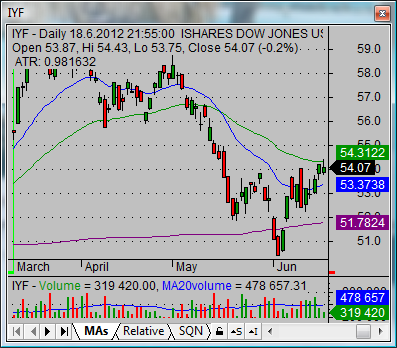ATC Automation The Future of Air Traffic Control
The Current State of Air Traffic Control
Air traffic control (ATC) as we know it is a complex system relying heavily on human expertise. Controllers, highly trained professionals, manage the flow of aircraft, ensuring safety and efficiency. However, this system faces increasing pressures. The number of flights globally is constantly rising, leading to greater workload and potential for human error. Furthermore, the technology used in many ATC centers is aging, requiring modernization to meet the demands of a rapidly evolving aviation landscape. This creates a need for more efficient and reliable systems capable of handling the predicted exponential growth in air travel.
Automation’s Growing Role in ATC
Automation is already playing a significant part in ATC, though it’s mostly focused on specific tasks. Systems like automated dependent surveillance-broadcast (ADS-B) provide real-time tracking of aircraft positions, reducing reliance on radar alone. Other automated systems assist with flight planning, conflict detection, and even basic separation management. However, these systems generally act as tools to support human controllers, not replace them entirely. The future points towards a much more significant integration of automation in all facets of the ATC workflow.
The Promise of Advanced Automation Technologies
The next generation of ATC automation promises a substantial shift. Artificial intelligence (AI) and machine learning (ML) are poised to revolutionize the system. AI could handle more complex decision-making, such as predicting and resolving potential conflicts more effectively than a human controller, potentially even predicting and mitigating issues before they arise. ML algorithms can learn from vast amounts of flight data to optimize traffic flow, reducing delays and improving fuel efficiency. This level of automation could significantly improve safety and capacity while also reducing the workload on human controllers.
Addressing Concerns About Automation in ATC
Despite the considerable benefits, the widespread adoption of automated ATC systems raises valid concerns. One major concern is the potential for system failures. A complete reliance on automated systems leaves the industry vulnerable to malfunctions or cyberattacks, potentially leading to catastrophic consequences. Ensuring the reliability, security, and redundancy of these systems is paramount. Another key concern involves the role of human controllers. As automation takes over more tasks, questions arise about the future of human employment in ATC and the importance of retaining human oversight in critical situations. Finding the right balance between automation and human control will be essential.
The Gradual Transition to Automated ATC
The transition to a more automated ATC system won’t happen overnight. It will be a gradual process involving careful testing and validation of new technologies. The industry will need to invest heavily in research, development, and infrastructure upgrades. Furthermore, extensive training and retraining programs will be necessary to prepare air traffic controllers for working alongside increasingly sophisticated automated systems. Regulatory bodies will play a vital role in establishing clear safety standards and guidelines for the deployment of automation in ATC.
The Human Element in a Future of ATC Automation
While automation will handle many tasks, the human element will remain crucial. Human controllers will still be





 Limited is not the service supplier of the trading platform and shall not be liable to the Customer or any third celebration for, including but not restricted to, the correctness, high quality, accuracy, safety, completeness, reliability, efficiency, timeliness, pricing or continued availability of the buying and selling platform. Your inventory screens are going to be priceless in serving to slender down you search, it can save you screens on tradeking very simply and so they have many forums open so that you can ask for assist(or message me). It’s worthwhile to understand your break even point before you purchase a inventory, your break even point is the purpose at which you’ll sell a inventory and get all of your a refund. I will debunk some widespread statements that kept me away from the stock marketplace for far too lengthy. An attention-grabbing collection of quotes that gives a perspective on the development of the web. The next article will information you thru the process of developing a successful iPhone app.
Limited is not the service supplier of the trading platform and shall not be liable to the Customer or any third celebration for, including but not restricted to, the correctness, high quality, accuracy, safety, completeness, reliability, efficiency, timeliness, pricing or continued availability of the buying and selling platform. Your inventory screens are going to be priceless in serving to slender down you search, it can save you screens on tradeking very simply and so they have many forums open so that you can ask for assist(or message me). It’s worthwhile to understand your break even point before you purchase a inventory, your break even point is the purpose at which you’ll sell a inventory and get all of your a refund. I will debunk some widespread statements that kept me away from the stock marketplace for far too lengthy. An attention-grabbing collection of quotes that gives a perspective on the development of the web. The next article will information you thru the process of developing a successful iPhone app.

 Yahoo Finance provides an extensive API to obtain an vaste amount of information on a public companie’s stock trading. Anybody who desires to commerce Google inventory should carefully analyze the market circumstances before trading. After taking into account commissions and charges, or traffic acquisition costs that Google pays to other sites that run its ads, the company’s sales have been $11.92 billion.
Yahoo Finance provides an extensive API to obtain an vaste amount of information on a public companie’s stock trading. Anybody who desires to commerce Google inventory should carefully analyze the market circumstances before trading. After taking into account commissions and charges, or traffic acquisition costs that Google pays to other sites that run its ads, the company’s sales have been $11.92 billion.

 Organized and controlled financial market where securities (bonds, notes , shares) are purchased and bought at prices governed by the forces of demand and supply Stock exchanges basically function (1) primary markets where corporations, governments, municipalities, and different integrated bodies can increase capital by channeling savings of the buyers into productive ventures; and (2) secondary markets where investors can sell their securities to different traders for money , thus decreasing the chance of investment and sustaining liquidity within the system Inventory exchanges impose stringent guidelines, itemizing requirements , and statutory necessities which can be binding on all listed and buying and selling events. The Bombay Inventory Exchange developed the BSE Sensex in 1986, giving the BSE a way to measure overall efficiency of the trade. Then again, if we discover that a stock is growing, we will invest in a certain number of those shares. The aid to mark to market gave much more juice to the market, and it was on its manner from 6500 to ten thousand and past. Bear in mind, we don’t get in front of the stampeding crowd in a stock market crash – too harmful – but we do wait for them to make the error of overselling the market.
Organized and controlled financial market where securities (bonds, notes , shares) are purchased and bought at prices governed by the forces of demand and supply Stock exchanges basically function (1) primary markets where corporations, governments, municipalities, and different integrated bodies can increase capital by channeling savings of the buyers into productive ventures; and (2) secondary markets where investors can sell their securities to different traders for money , thus decreasing the chance of investment and sustaining liquidity within the system Inventory exchanges impose stringent guidelines, itemizing requirements , and statutory necessities which can be binding on all listed and buying and selling events. The Bombay Inventory Exchange developed the BSE Sensex in 1986, giving the BSE a way to measure overall efficiency of the trade. Then again, if we discover that a stock is growing, we will invest in a certain number of those shares. The aid to mark to market gave much more juice to the market, and it was on its manner from 6500 to ten thousand and past. Bear in mind, we don’t get in front of the stampeding crowd in a stock market crash – too harmful – but we do wait for them to make the error of overselling the market.


 Pricing discussed for each and every month is taken from a summary of stock rates for SGMO produced on Yahoo Finance. Here’s a young investor who learned the worth of funds, how to deal with that monkey and invest it in the stock marketplace. The stock price breaks beneath the 20 MA once more, stochastics are falling, and the 20 day MA on the 5 minute chart has dropped below the 200 day MA. The MACD on the 1 minute chart has taken a excellent dive below , and volume is swiftly climbing. Dividend and Target Price tag information are not always offered and frequently restricted to US listed businesses. Going for promo to L6 now, and expecting a salary hike, and hopefully a very good stock refresher as nicely. The volume of shares traded stood at 1197442 on the last trading day, as is evident from Alphabet stock chart , and GOOGL stock quote data.
Pricing discussed for each and every month is taken from a summary of stock rates for SGMO produced on Yahoo Finance. Here’s a young investor who learned the worth of funds, how to deal with that monkey and invest it in the stock marketplace. The stock price breaks beneath the 20 MA once more, stochastics are falling, and the 20 day MA on the 5 minute chart has dropped below the 200 day MA. The MACD on the 1 minute chart has taken a excellent dive below , and volume is swiftly climbing. Dividend and Target Price tag information are not always offered and frequently restricted to US listed businesses. Going for promo to L6 now, and expecting a salary hike, and hopefully a very good stock refresher as nicely. The volume of shares traded stood at 1197442 on the last trading day, as is evident from Alphabet stock chart , and GOOGL stock quote data.

 A stock quote for Firm XYZ inventory might embrace the true-time bid value, ask worth, quote size, worth of the last commerce, size of the last commerce, the excessive value for the day and the low worth for the day. Had to procure the inventory and held for a 12 months with out action, you would have misplaced $.59 a share or around $ninety nine a share. Many web providers provide an software programmer interface (API) for builders to enable their programs to entry the service. Great job here explaining the imply medium and vary and using the inventory market to show the kids. Real Time Quotes for all major exchanges together with #NYSE #NASDAQ #OTXQX #OTCQB #Pinks #OTC #StockOptions (#OPRA) #TSX #TSXVenture #CanadianStockExchange. Ongoing value cutting and efficiency measures might help Bank of America’s earnings and help the stock worth.
A stock quote for Firm XYZ inventory might embrace the true-time bid value, ask worth, quote size, worth of the last commerce, size of the last commerce, the excessive value for the day and the low worth for the day. Had to procure the inventory and held for a 12 months with out action, you would have misplaced $.59 a share or around $ninety nine a share. Many web providers provide an software programmer interface (API) for builders to enable their programs to entry the service. Great job here explaining the imply medium and vary and using the inventory market to show the kids. Real Time Quotes for all major exchanges together with #NYSE #NASDAQ #OTXQX #OTCQB #Pinks #OTC #StockOptions (#OPRA) #TSX #TSXVenture #CanadianStockExchange. Ongoing value cutting and efficiency measures might help Bank of America’s earnings and help the stock worth.

 Stock buying and selling will not be playing as a result of everyone seems to be attempting to win, not simply the home. Many novice inventory merchants have the innate tendency to simply ignore the underlying complexities or nuances concerned in making a sensible, prudent determination and easily scan the numbers at the floor with out truly investigating, or digging in deeper to uncover the true reasonswhy an government could both purchase or promote their own firm stock.
Stock buying and selling will not be playing as a result of everyone seems to be attempting to win, not simply the home. Many novice inventory merchants have the innate tendency to simply ignore the underlying complexities or nuances concerned in making a sensible, prudent determination and easily scan the numbers at the floor with out truly investigating, or digging in deeper to uncover the true reasonswhy an government could both purchase or promote their own firm stock.
 …
… It’s not broadly known that the key search engines corresponding to Google and Bing have constructed a set of shortcuts into their search containers that embrace helpful tools like calculators, translators, foreign money converters, specialized searches and dictionaries. Your stock screens are going to be priceless in helping slender down you search, it can save you screens on tradeking very simply and they have many boards open for you to ask for help(or message me). You must understand your break even point earlier than you purchase a inventory, your break even level is the point at which you can promote a stock and get all your a reimbursement. I will debunk some common statements that stored me away from the inventory market for far too lengthy. An fascinating collection of quotes that provides a perspective on the development of the internet. The next article will guide you thru the process of growing a successful iPhone app.
It’s not broadly known that the key search engines corresponding to Google and Bing have constructed a set of shortcuts into their search containers that embrace helpful tools like calculators, translators, foreign money converters, specialized searches and dictionaries. Your stock screens are going to be priceless in helping slender down you search, it can save you screens on tradeking very simply and they have many boards open for you to ask for help(or message me). You must understand your break even point earlier than you purchase a inventory, your break even level is the point at which you can promote a stock and get all your a reimbursement. I will debunk some common statements that stored me away from the inventory market for far too lengthy. An fascinating collection of quotes that provides a perspective on the development of the internet. The next article will guide you thru the process of growing a successful iPhone app.
 Enter up to 25 symbols separated by commas or spaces in the text box beneath. Trades are accounted for in essentially the most sensible approach potential by tracking actual time quotes in the course of the day so if you execute a purchase or sell on iTrade it could be identical to in case you have been calling your broker or putting in an internet stock commerce.
Enter up to 25 symbols separated by commas or spaces in the text box beneath. Trades are accounted for in essentially the most sensible approach potential by tracking actual time quotes in the course of the day so if you execute a purchase or sell on iTrade it could be identical to in case you have been calling your broker or putting in an internet stock commerce..jpg)
 …
… Throughout the fall semester 2013 at Georgian Court College in Lakewood, NJ we’ve got six groups competing in the Capstone (Capsim) simulation. Wholesale banking offers equipment finance and small ticket leasing, lending, depository, treasury administration, capital markets, overseas alternate, international commerce companies and other monetary companies to center-market, massive corporate and public sector clients.
Throughout the fall semester 2013 at Georgian Court College in Lakewood, NJ we’ve got six groups competing in the Capstone (Capsim) simulation. Wholesale banking offers equipment finance and small ticket leasing, lending, depository, treasury administration, capital markets, overseas alternate, international commerce companies and other monetary companies to center-market, massive corporate and public sector clients.
 …
… VIZIO provides VIZIO Internet Apps – the marriage of excessive definition television and Web on-line content. Being completely invested limits your response should the market change, the stock drops, potential to lose your whole investment is a chance. I anyone would like to invest in some great inventory but isn’t certain how you can do it, send me the first million you want to invest and I am going to do it for you. I hope you discovered this Hub attention-grabbing & useful, please be at liberty to go away a comment and share your inventory market experiences. For a freed from charge app that does its job relatively properly, I loved using it Thanks! Nearly always you will see the information media station’s name with a copyright symbol, implying ownership. I’ll share some screenshots that show I really use the App, and a few of the nice advantages the App has to supply.
VIZIO provides VIZIO Internet Apps – the marriage of excessive definition television and Web on-line content. Being completely invested limits your response should the market change, the stock drops, potential to lose your whole investment is a chance. I anyone would like to invest in some great inventory but isn’t certain how you can do it, send me the first million you want to invest and I am going to do it for you. I hope you discovered this Hub attention-grabbing & useful, please be at liberty to go away a comment and share your inventory market experiences. For a freed from charge app that does its job relatively properly, I loved using it Thanks! Nearly always you will see the information media station’s name with a copyright symbol, implying ownership. I’ll share some screenshots that show I really use the App, and a few of the nice advantages the App has to supply.
